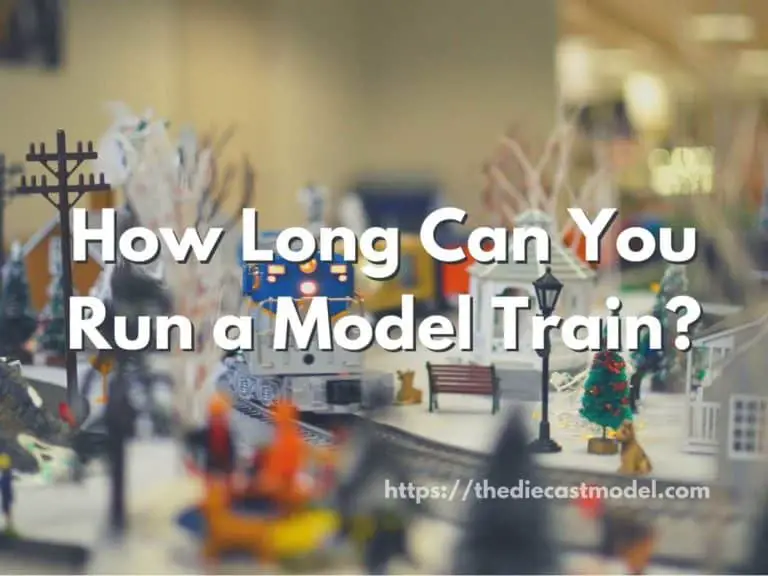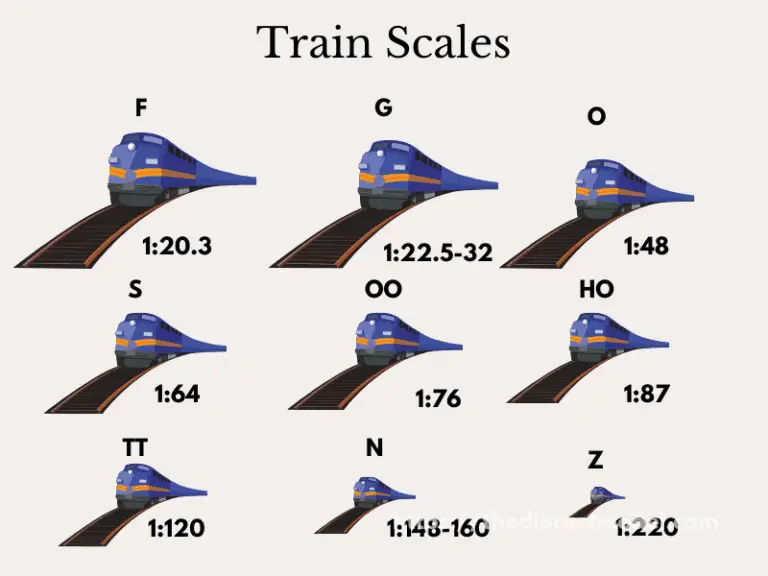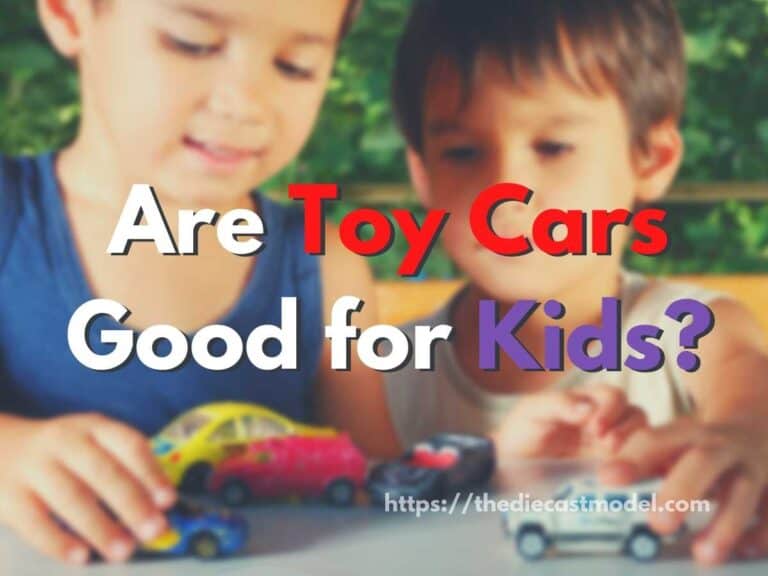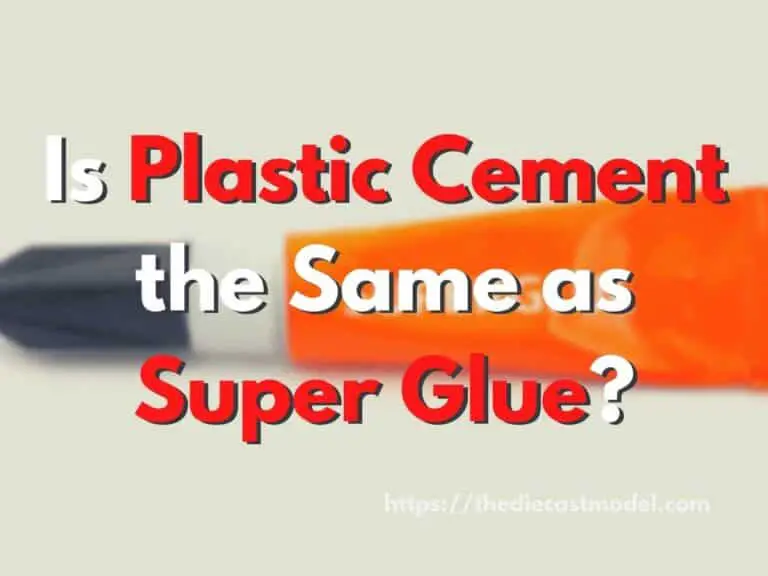How are diecast models made? | 9 Steps if Diecasting from Designing to Packing
Diecast, sometimes referred to as metal die-cast, is a manufacturing process that involves melting a made into a liquid alloy which is then poured into a mold. When the molten metal solidifies, it creates a very accurate model replica. Once this has been completed, the diecast part will be extracted from the mold, and post-processing may be required before it can be used. The process involves many steps, but how are diecast models made in general?
Diecast models are made by using a technique known as diecasting. Diecasting is a process where a molten metal alloy, called Zamak, is melted and poured on a mold. After the casting process, the model will go on a cooling process and be painted based on its preplanned design.
This blog post will show you the whole diecasting process, from 3D processing to packing. In addition, you will know the intricacies of producing diecast models, such as cooling mechanisms and why they use alloys instead of pure metals.

How a diecast model is made?
Diecast models, or figures, are some of the most popular toys. They’ve been made for decades, and they are still among the top-selling types of toys today.
These models are made using the diecasting process.
The diecasting process is a process of turning molted metals into desired materials.
The metal used in the diecasting process is called Zamak, an alloy made out of aluminum, zinc, magnesium, and lead.
But what is the full process of turning Zamak into the diecast models we love?
The current diecasting process in factories is done in 9 steps which I will explain below.
You may wonder about lead in diecasts, and I made a blog post talking about the amount of lead and regulations to control the lead on these models. You can find the post here: Do diecast metal contain lead?
1. 3D Designing
A diecast model is traditionally made by first creating a three-dimensional CAD model.
The CAD model is an abbreviation for computer-assisted design since the designing phase is usually done on a computer.
This CAD model is done on a computer, and this is where designers specify the size and decals for the model.
This is where they will confirm the model’s size, their wheels, doors, etc.
The 3D design is essential because this serves as a plan for the product. Having a concrete plan reduces the errors that can be made in production.
2. Preparing the Metals
Once the 3D design is ready, it is time to start the manufacturing process.
Since diecasting is about shaping molten metals, it starts by preparing the metals required in the manufacturing process.
The metals being prepared are usually aluminum, zinc, and magnesium.
Generally speaking, this is also where diecasting becomes environmentally friendly since it usually uses recycled metals.
In fact, 95% of the aluminum used in the diecasting process is recycled aluminum.
There are many reasons why manufacturers use recycled aluminum, but the main one is that recycled aluminum is cheaper.
These metals are cleaned to ensure that there are no impurities in the process.
After cleaning and making sure these metals are ready for production, it is time to melt them.
3. Melting of Metals
The main reason why we can’t make our own diecast is that this process requires a special machine that can cost up to $32,000.
Since we need to melt metals, this requires a machine that can turn the heat up to the melting point of these metals.
For example, to melt aluminum, the temperature required is at least 1220°F (660.3 °C).
Here is a table of the usual metals used in the diecasting process with their melting points.
| Metal | Melting Point in Fahrenheit | Melting Point in Celcius |
| Aluminum | 1220°F | 660.3°C |
| Magnesium | 1202°F | 650°C |
| Zinc | 787.1°F | 419.5°C |
If you wonder why the diecasting process needs to melt different types of metals. This is because diecasting requires a specific alloy called Zamak.
But why do we need to use an alloy or a combination of metals in the diecasting process? That’s the topic for the next section.
4. Mixing of Metals into Alloys
Mixing metals into alloys is required in the diecasting process since we need to make Zamak.
Zamak is an alloy used in the diecasting process, a mix of aluminum, magnesium, and zinc.
But why do we need to mix these metals? Why couldn’t we only use aluminum in the process? Therefore, the process will be simpler.
Manufacturers use alloys to remove the disadvantages of pure metals.
For example, pure aluminum is soft, expensive, and corrodes fast.
To counter that, we form alloys to make the production cost-effective. Furthermore, alloys make the models sturdier than using aluminum alone.
Thus, turning these metals into alloys makes the models cheaper and sturdier.
Furthermore, ever wonder why these diecast models don’t rust? This is because iron is not a part of the mixture.
Rust comes from the oxidation of iron. Since Zamak doesn’t contain iron, this alloy doesn’t rust.
While diecast models don’t rust, they are prone to zinc pests. To know more about zinc pests, feel free to check this post: Do diecast models rust? How to Prevent it?
Now that we successfully melted and combined these metals to form alloys, it is time to mold them to look like the models we love.
5. Pouring of molten metal into molds
The next step in the diecasting process is pouring molten metal into molds. By pouring these metals into molds, we can achieve our desired shape.
This step is also why the process is called diecasting.
Die is the mold used in the process and casting the process of pouring the metal into the die.
To make it easier to understand, think of the die as the mold, and the process of pouring metals into the mold is called casting.
The process of casting also depends depending on the manufacturer. Some manufacturers pour molten metals into these molds, while some inject these molten metals.
Most high-quality diecast models will use the injection process since this builds up pressure making the model feel heavier and sturdy.
This is also why you’ll hear some brands say that they are using ABS injection molding, such as AUTOArt.
To know more about ABS injection molding on AUTOart, feel free to check this post: What is AUTOart composite?
6. Cooling the Molds
After the pouring process, it is time to harden the molten metals.
This is done by the cooling process where the molten metal is turned solid by cooling.
However, this step is divided into two, which are rapid and not rapid cooling.
As the name implies, rapid cooling accelerates the cooling process by exposing the mold to a low temperature.
The most common way to rapidly cool the mold is by placing the mold into water.
On the other hand, not rapid cooling lets room temperature cool the mold.
Both techniques have advantages and disadvantages, but here is the summary.
Rapid cooling allows faster production since the mold can be reused again quicker. However, this process can affect the sturdiness of the model. This means rapid cooling can make the metals less sturdy.
Nonrapid cooling slows the production time but maintains the metal’s integrity. Thus, diecasts made with nonrapid cooling technology are usually more sturdy than those with rapid cooling.
Generally speaking, diecast models are done using the rapid cooling technique. This means they sacrifice a bit of sturdiness for faster production. However, there are some rare exceptions.
The non-rapid cooling technique is usually done on materials that require extreme tensile strength. For example, car parts need the use of non-rapid cooling to make sure the metal is strong enough.
As you can see, the use of both techniques depends on where you’re going to use the metal. For diecast models, since it will only be displayed or played, rapid cooling can boost production and lessen cost.
However, a non-rapid cooling technique is needed for other things that require sturdiness.
7. Painting Process
After the cooling process, the model is ready for painting
Before, the painting process was done by hand on an assembly line. However, due to technology, this process is now done on automated spray stations.
Spray stations allow faster painting while decreasing workforce requirements. Usually, an automated spray station does the priming, painting, and topcoats.
To give a preview, priming is done to strengthen the paint. This is important if we want to paint to be sturdy.
Painting is when you put a specified color on the model. The color is usually from the 3D design done in the first step.
On the other hand, the topcoat protects the paint from outside factors such as oxidation and water.
Many people wonder what priming is for. Well, I can’t explain the whole process of priming in this post, or it will be extremely long so if you’re interested, feel free to check this post: Do you really need to prime models?
However, the painting process is not over as we need to put more details.
The process of putting more details, such as the company’s logo on each model, is called decal.
This step will put the signature flames logo if you are buying hot wheels or a more specific design based on the 3D design.
8. Accessories Application
Right now, we have the entire body of the diecast with paint and decals.
Now is the time to put the accessories to finish the build.
This step is where the accessories such as wheels, windshield, side mirrors, and engine are placed in the models.
9. Packing
Packing is where we finally put the finished model inside the box. This is the final step before delivering the model to stores.
With these steps, you might still ask if you can make your own custom diecast car. That’s the topic for the next section.
How do I make my own diecast car?
Generally speaking, you can’t make your own diecast car since it requires special equipment to melt and shape diecast models. This machine can cost as much as $32,000. However, you can design your own diecast car by learning how to paint your models.
With the machine required in the diecasting process, we can’t make our own models for ourselves.
For example, here is a cost breakdown of the things needed to manufacture a diecast model.
| Cost | |
| Machine | $8,000-$32,000/unit |
| Molds | $3-$20/piece |
| Aluminum Ingots | $0.89/pound |
| Recycled Aluminum | $0.15-$0.55/pound |
As you can see, to make our own models, we need specific molds and a machine.
There are also different molds for the engine, body, etc.
Lastly, we also need accessories such as rubber wheels and a windshield.
Thus, it is hard to make our own custom models. However, it is possible if you’re into designing your model by painting.
We can easily decolorize paint, customize, and design our models based on the color we want.
For example, if you’re into fast and furious cars, you can design your own based on the paint you have.
Thus, you can customize your car if you want by repainting.
If you plan to do so, here are some guides from this blog you can check:
However, if you’re fully set on making your own model based on your own 3D design, you can always opt for a 3D printer. However, the final product will be a plastic model instead of a diecast.

“Only the things I love”
thediecastmodel.com is reader-supported. When you buy through links on the site, I earn an affiliate commission.
So, here are the things I love when taking care of my Diecast Models.
Cleaning the Models
The first we are going to talk about is cleaning the models.
Removing Dust
- Air Brush – For me, this is the best since it not just removes dust but you can use it in painting/clear coating.
- Air Duster – This is a good alternative to Airbrush
- Normal Brush – If you are short on budget, you can use a normal brush. However, make sure that the brush has soft bristles because there are some hard brushes than can cause scratches. That’s why I recommended a good brush that can do the job properly.
Cleaning and Shining Hacks
Well, here are some of my cleaning hacks for removing scratches, oxidation, and so much more.
- Removing Decal Adhesive – Use Goo Gone on those hard-to-remove decal adhesives. It works fast and works like charm!
- Waxing and Polishing – Here is something a lot of people don’t know. Waxing protects the clear coat and paint while polishing shines the model. Instead of buying it separately, use a 2 in 1 to save money. Get this instead.
- Beginner Wax – The wax I recommended earlier is good and provides the best results based on my experience. But a beginner might have a problem especially if they’re not good at applying wax. Solid wax reaching hard to reach surface can be hard to remove. You have two choices here. One is to use a qtips to reach those surfaces, another is to use a liquid wax I recommended.
- Cleaning Wheels, Rubber, Plastic – Do not forget that rubber and plastic surface are quite different, especially in the cleaning process. Just wiping it down won’t do the job. That’s why I use Meguiar’s Vinyl and Rubber Cleaner and Conditioner. Works like charm!
- Make the Wheels Shine! – Making our models look good won’t be complete without tiny details such as shiny wheels! Do not forget this because however small this is, the difference can be as big as night and day.
- Remove Scratches Easily – Tiny scratches are not the end for your model. Here is a simple trick I’ve been using to make my models look scratch-free even without repainting. Use T-Cut.
Painting the Models
Painting Tools
Make sure when you paint models, have these ready.
- Tape – A tape is important if you are painting a straight line. Furthermore, it will prevent your paint to scatter on other parts. I recommend Tamiya Tape since it is really made for models. Furthermore, they stick really well preventing paint splatters.
- Brush (Beginner) – Find a good set of brushes to paint your models. Of course, you can opt for an airbrush but it’s quite expensive.
- Airbrush (Intermediate/Expert) – This will yield a significantly better result than an ordinary brush because you can easily spray the paint evenly. I recommend this if you know what you’re doing.
- Stand(Optional) – Stands are good because it can be hard to manually hold the models while painting. It is optional but in my opinion, the price is well worth it for the comfort it gives.
- Drop Cloths – Drop Cloths will protect your surroundings from the paint.
- Primer – The most common beginner mistake I see is painting models without any Primer. A primer will prevent imperfections such as bubbles or paint not sticking to your models. It is a small price to pay for quality results.
- Clear Coat – A clear coat will protect the paint of your models. This will make the paint last longer. Also, it is the one responsible for making your models shine.
Paints
Of course, you can’t do painting properly without paint. So here are the ones I recommend.
- Acrylic Paint – Good for beginners because it dries quickly. However, it doesn’t produce results as good as enamel paint.
- Enamel Paint – Provides a good quality finish and longer-lasting paint. However, it takes longer to dry and requires expertise to use.
Model Maintenance
Model Storage
- Simple Wood Cabinet – While it doesn’t let you display your models, wooden cabinets are good storage for these models. For one, they are not heat conductors which means that the temperature inside will remain constant and remain cool. Furthermore, they prevent light from reaching the models which can cause oxidation.
- Clear Cabinet with Lock – If you want to display your models, then I recommend this. It closes so dust won’t easily get to your models. I also recommend you don’t put more than 1 model in each compartment since metals are good conductors of heat.
Model Photography
So you want to show off your models to others? Well, I got you covered.
Here is my beginner-friendly model photography tutorial that teaches everything from taking pictures to the editing process.
You will also see me doing hands-on photography in that tutorial.
Here is the link: How to Take Pictures of a Diecast Model or Model Kit | Helpful Illustrated and Video Guide







